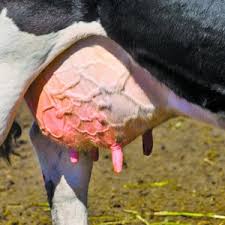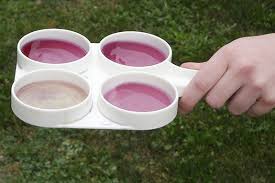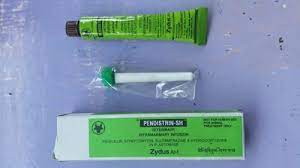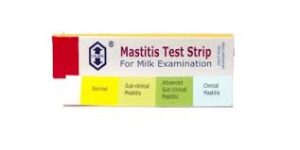Sub Clinical Mastitis in Dairy Cattle
Dr. Lata Kant and Dr. Neha Rajawat,
Division of Physiology and Climatology, ICAR-Indian Veterinary Research Institute, Izzatnagar-243122, India
Mastitis, an inflammation of the mammary gland, develops as a result of bacterial damage to the gland during the restoration of normal function. The condition that continues to cost the dairy business the most money is bovine mastitis. One of the most prevalent ailments affecting dairy cattle is mastitis, which can manifest both clinically and subclinically. The most common type of mastitis, subclinical mastitis (SM), is an asymptomatic form of intramammary inflammation that affects 20–50% of cows in a given herd. Subclinical mastitis in dairy cattle is a serious and underreported issue that costs producers more money. It is one of the main reasons of low output and subpar milk quality, and it is also the sickness that costs owners the most money. Mastitis is characterised by physical, chemical, and typically bacterial abnormalities in milk as well as pathological changes in glandular tissues. Mastitis is an inflammation of the parenchyma of the mammary glands. It is a global issue since it has a negative impact on animal health, milk quality, and milk production economics, and it causes significant financial losses due to culling, lower production, decreased fecundity, and treatment expenses. In addition to drastically reducing milk production, the subclinically afflicted animals continue to infect their fellow herd members.
According to certain research, the prevalence of subclinical mastitis in cows varied from 19.20 to 83 percent. In India, subclinical mastitis alone has been associated to a 70–80% economic loss. Given its intricacy and the variety of causative microorganisms involved, it is likewise a complicated disease. Complete eradication is not, however, now possible. It has no noticeable effects on the udder or the milk. Cows with subclinical intramammary infections (IMI) give less milk with lower quality, despite the milk appearing to be normal. Milk production may drop by 10%–20% as a result of subclinical mastitis. Additionally, it has a negative impact on the nutritional value and composition of the milk, degrading its quality and decreasing its suitability for processing. Subclinical mastitis requires specialised diagnostic techniques for diagnosis because there are no obvious abnormalities in the milk. Because changes in the udder tissue occur before they are noticeable, early identification of mastitis, particularly in particular subclinical mastitis, is essential. Since it is difficult to diagnose without a laboratory or field test and frequently goes unrecognised by the farmer, it is regarded as a hidden form of mastitis.
Prevalence of sub clinical mastitis
The prevalence of sub clinical mastitis is 15 to 40 times higher than that of clinical mastitis. Estimates were 53.52 percent, 51.18 percent, 39.58 percent, 62.49 percent, and 35.11 percent, respectively, for Punjab, Haryana, Uttar Pradesh, Madhya Pradesh, and Maharashtra. According to a meta-analysis of state-level prevalence data, Punjab and Haryana had comparable rates of subclinical mastitis on a per-cow basis.
Risk factors of sub clinical mastitis
Risk elements include the following: the Host (breed, high yielder, age, parity, stage of lactation, udder defence, udder confirmation, milking interval, milk somatic cell count, Dry period, teat injuries, genetic resistance), the Pathogen (virulence factor, number of organisms, blind treatment), the Management Practices (shed and udder hygiene, poor teat condition, poor environmental hygiene, sanitation, large herd size, use of hand wash cloth, improper teat dipping, milking method, milking equipment, and nutrition (such as a lack of Cu, Co, Zn, Selenium, and vitamin E) play a significant role in the prevalence of subclinical mastitis.
Causative agents of Sub clinical mastitis
Following Staphylococcus aureus as the predominant bacterium isolated from instances of subclinical mastitis in cows is Streptococcus dysgalactiae. Numerous additional organisms, such as Actinomyces pyogenes, Pseudomonas aeruginosa, Nocardia asteroids, Clostridium perfringens, and yeast species as well as Mycobacterium, Mycoplasma, Pasteurella, and Prototheca species may also be connected to it. Only a few common bacterial infections, including the Staphylococcus species, Streptococcus species, Coliforms, and Actinomyces pyogenes, are responsible for the vast majority of cases.

Economic loss due to subclinical mastitis
In India, mastitis was reported to have caused an economic loss of INR 6,053.21 crore, of which the majority (between 70 and 80 percent) was attributable to sub-clinical mastitis, which accounted for about INR 4,365.32 crore4. Crossbred cows with subclinical mastitis experienced a lactational economic loss of INR 592.87 and a lactational economic loss of INR 700.1824. Mastitis caused annual losses in the Indian dairy industry of close to 2.37 trillion rupees. Out of this, sub-clinical mastitis was responsible for almost 70% of the loss.
Detection of Sub clinical mastitis in cattle
In order to identify changes in the milk caused by an inflammatory process, the International Dairy Federation (IDF) recommends using the somatic cell count (SCC) and the microbiological state of the quarter. For the diagnosis of SCM, numerous tests have been developed over many years. SCM can be discovered using a variety of direct and indirect methods. Indirect tests are beneficial in identifying the quality of milk, and those that are appropriate for use in the field may be helpful in detecting in the absence of laboratory facilities. The Modified California Mastitis Test (MCMT), the Modified White Side Test (MWST), and the Surf Field Mastitis Test (SFMT) are cow side tests. Screening tests such as the Electrical conductivity (EC) and pH tests, as well as laboratory tests such as the Methylene Blue Reduction Test, are also included (MBRT). An rise in SCC in milk is directly related to mammary gland inflammation.
Direct measurement of the somatic cell count (SCC) level
. The primary rise in SCC that occurs during inflammation (mastitis) is brought on by neutrophils entering the milk to fight infection. SCC in milk from a healthy mammary gland is less than 1 105 cells per millilitre, but it can rise to 1 106 cells per millilitre in cases of bacterial infection.
California mastitis test (CMT)

The California Mastitis Test (CMT) is a diagnostic tool for an udder health management programme that helps with the rapid diagnosis of mastitis in dairy cows. When lactation first begins or is already underway, the CMT is done to check for the existence of subclinical illnesses. Using a clean CMT paddle, a sample of milk from each quarter is pulled, and an equivalent amount of reagent is used when checking for infected quarters. The components are well combined. Any quarter with a CMT score of trace and pronounced thickening or very moderate gelling is regarded as subclinically infected.
Changes in composition of milk
Chloride, salt, and protein concentrations are greater in milk from an udder with mastitis. Milk with a subclinical mastitic condition has a higher pH.
Electrical conductivity of milk
At 25°C, regular milk typically has an Electrical Conductivity of 4.0 to 5.0 mS. The concentration of anions and cations affects electrical conductivity. The concentration of Na+ and Cl in milk rises when a cow has mastitis, which increases the EC of milk from the diseased quarter.
Measures to prevent incidence of mastitis in cattle
Mastitis can be prevented by immersing the teat in an antiseptic solution both before and after milking. Iodine, chlorhexidine, quaternary ammoniums, and others are regularly used as a germicidal teat dip after milking. Proper milking technique in the parlor to prevent teat injury and cow-to-cow transmission of pathogens.
- As infections can spread from hands to udders during manual milking, washing hands before and after can lower the risk of infection.
- Mastitis risk can be decreased with proper milking equipment cleaning and maintenance.
- Early detection and treatment of infected animals
- Dry cow therapy with long acting antibiotics to reduce duration of existing infection
- Vaccines for different mastitis pathogens have been developed.
- For early detection regular screening of herd infrared thermographic screening can be very much helpful.
- Use of clean and proper designed milking parlour or milking equipment.
- Herbal treatment like masticure, Mastiforte so many other combinations available in market which help in prevention or control,also reduces the antimicrobial resistance.
Use of antibiotics for prevention and treatment of Mastitis
The infected udder is usually treated with antimicrobial along with an herbal combination, whereas sub clinically infected udder may not be diagnosed immediately. The most common antimicrobials used to treat mastitis include cephalosporins, lincosamide, and non- cephalosporin β- lactam antibiotics. Culture and test the identified organisms for antibiotic resistance by determining the mean inhibitory concentration (MIC), which can also be helpful in determining the correct dosage to administer with the advancement of technology specially designed ointment tubes (Pendistrin) available for easy drug delivery to the Teats system. Mastitis Test strips also available in the market which can help in the diagnosis part.


Conclusion
Mastitis caused by environmental organisms and so-called minor pathogens have become the main challenge in the dairy sector. Current mastitis control programs are based on teat disinfection; antibiotic therapy and culling of chronically infected cows. The control of mastitis in the short term can be made by improving the nutrition, environment and management of dairy cows. The housing of the cows should allow them to be clean, dry and comfortable, and free from stress. Negative energy and protein balances after parturition may disturb the immune system and should be avoided. New milking techniques provide a possibility for better milking and improved udder health if used properly. To prevent production loss mastitis control should be part of the herd health program in the dairy herds.
Authors
Dr. Lata Kant and Dr. Neha Rajawat,
Division of Physiology and Climatology, ICAR-Indian Veterinary Research Institute, Izzatnagar-243122, India
Email: lata.kant@gmail.com
https://www.pashudhanpraharee.com/sub-clinical-mastitis-a-threat-to-dairy-farmers-2/
https://www.dairyknowledge.in/article/sub-clinical-mastitis-scm

